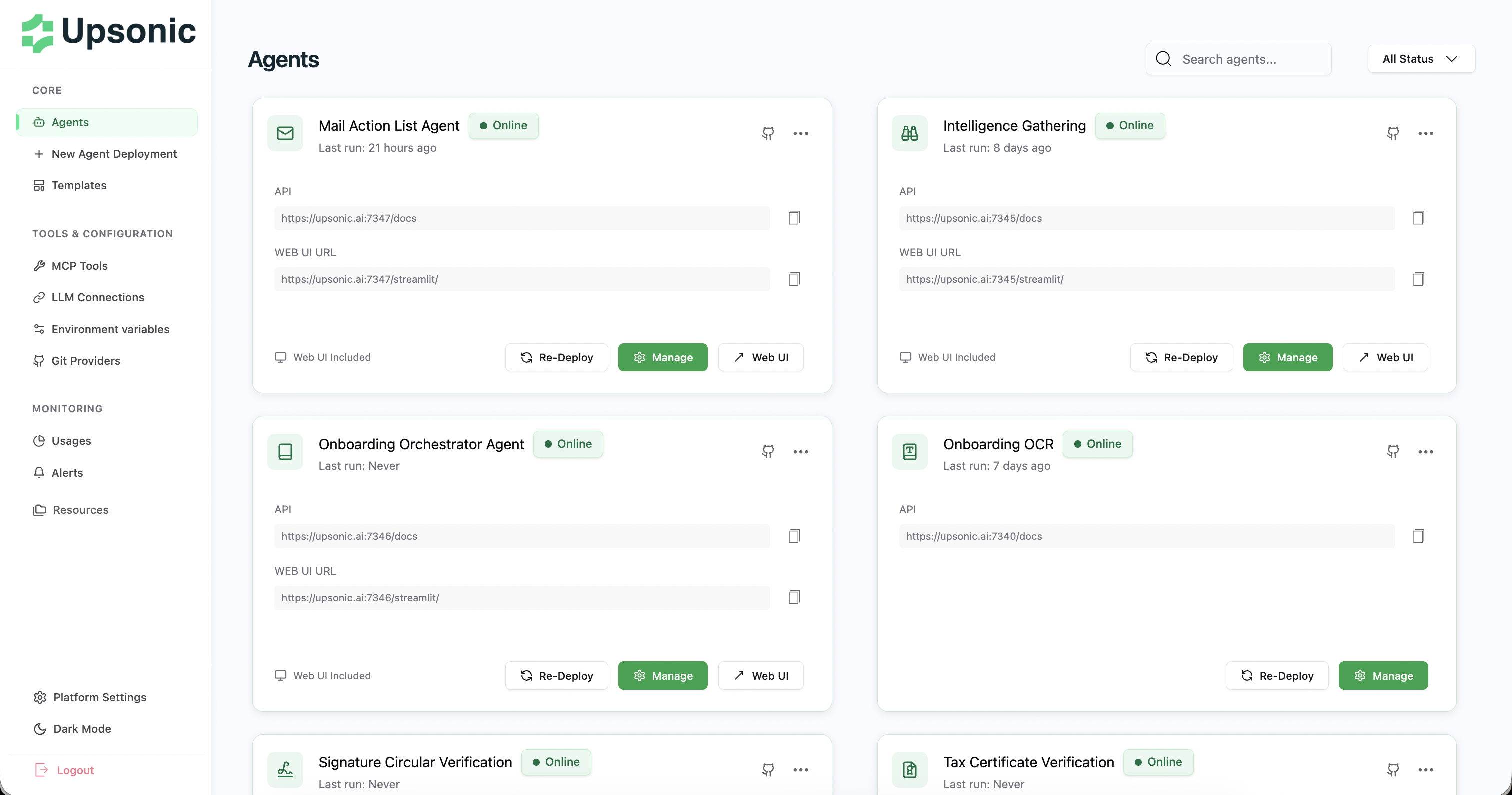
Upsonic Framework
You can use the Upsonic Framework to build safety-first AI Agents or teams with Memory, KnowledgeBase, OCR, Human in the Loop, tools and MCP Support. The Upsonic framework orchestrates all of the operations with its pipeline architecture. You are able to create complex and basic agents in one unified system. Our development process is based on what our community wants. Currently we are doubling down on Safety Engine and OCR capabilities.Upsonic AgentOS
AgentOS is a deployment and management platform for your AI Agents. You can click on the buttons to deploy production-ready and stable agent projects. The most important points are:- K8s-based FastAPI runtime: Upsonic AgentOS turns your agents into microservices by design. So you can integrate your agents into any of your systems easily, scalably, isolated and securely.
- Metric Dashboard: We have an integrated metric system. Every agent transaction and LLM costs are saved. So you have great visibility of your daily, monthly and yearly agent costs, tokens and other metrics.
- Available for On-premise: You can deploy the entire AgentOS platform on your local infrastructure.

Upsonic: Your Complete AI Agent Infrastructure
Together, the Upsonic Framework and AgentOS provide everything a financial institution needs to build, deploy, and manage production-grade AI agents. From development to deployment, from local testing to enterprise-scale operations, from single agents to complex multi-agent systems. Upsonic delivers the complete infrastructure for your AI agent initiatives. Whether you’re a fintech startup building your first intelligent automation or an established bank deploying agents across multiple business units, Upsonic provides the end-to-end tooling to bring your AI agent vision to life safely, efficiently, and at scale.Upsonic Framework 101
See our guides to jumpstart your AI agent within minutes. We design them to onboard the new users to the framework.- Create an Agent
- Create a Task
- Add a Safety Engine
- Add a Tool
- Add an MCP
- Integrate a Memory
- Creating a Team of Agents

